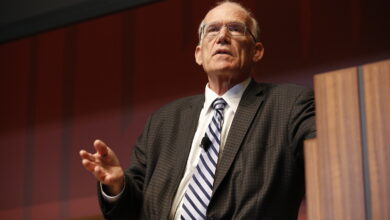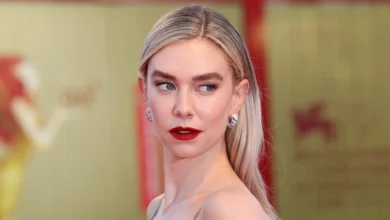New York Fashion Week 2024 A Fusion of Innovation and Timeless Elegance
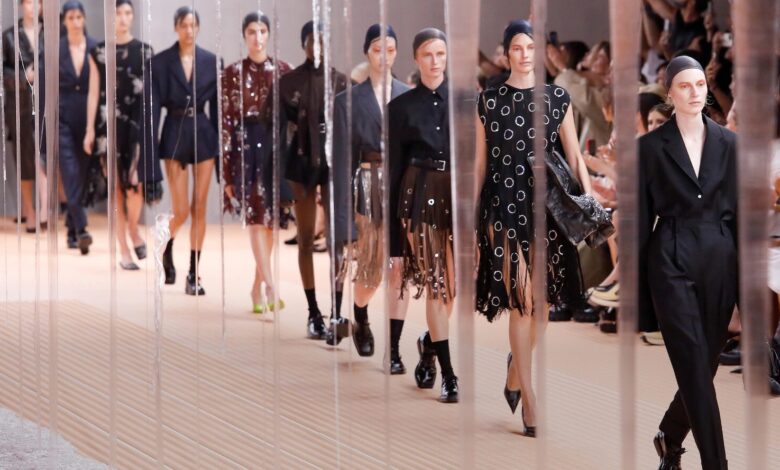
The Evolution of New York Fashion Week
New York Fashion Week 2024 has long stood as a cornerstone of global fashion, setting trends and redefining style for decades. The 2024 edition, however, marks a pivotal moment in its storied history. This year, the event transcends its traditional role as a seasonal showcase, emerging as a cultural phenomenon that blends avant-garde creativity with a renewed emphasis on sustainability and inclusivity.
New York Fashion Week 2024 collections unveiled at NYFW reflect a dynamic shift in the industry’s priorities. Designers are increasingly merging cutting-edge technology with handcrafted artistry, creating pieces that challenge conventional aesthetics while honoring timeless elegance. From biodegradable fabrics to AI-assisted design processes, innovation is no longer a buzzword—it’s the backbone of modern fashion.
New York Fashion Week 2024 apart is its deliberate focus on storytelling. Brands are leveraging their platforms to address societal issues, from climate activism to body positivity. Runways are no longer just about garments; they’re stages for narratives that resonate with a global audience. This evolution mirrors the changing demands of consumers, who now seek authenticity and purpose behind the labels they support.
The Runways: Where Boldness Meets Subtlety
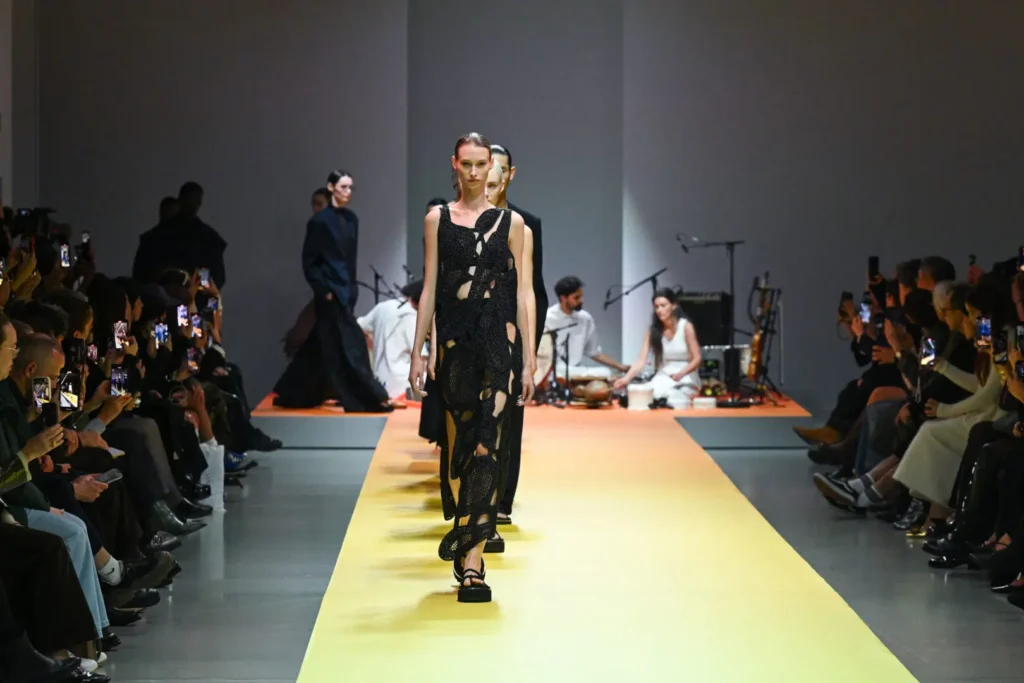
This year’s runways are a study in contrasts, balancing audacious experimentation with understated sophistication. Designers like Marc Jacobs and Tory Burch delivered collections that juxtaposed oversized silhouettes with delicate tailoring, proving that fashion thrives on duality. Vibrant hues—think electric cobalt and neon coral—shared the spotlight with muted earth tones, creating visual tension that captivated audiences.
One standout trend is the resurgence of structured minimalism. Brands such as The Row and Proenza Schouler showcased sleek, architectural designs that emphasized clean lines and precision. These pieces, often crafted from luxurious organic cotton and silks, highlight the beauty of simplicity. Yet, even within this minimalist framework, designers injected playful details—asymmetric hemlines, hidden pockets, or unexpected fabric textures—to keep the looks dynamic.
On the flip side, maximalism made a roaring comeback. Designers like Collina Strada and Area embraced chaos with layered textures, clashing patterns, and exaggerated proportions. Feathers, sequins, and 3D embellishments adorned garments, transforming models into walking art installations. This fearless approach to design signals a broader industry shift: fashion is no longer about fitting in but standing out.
Sustainability Takes Center Stage
If there’s one theme that dominated NYFW 2024, it’s sustainability. The industry’s growing commitment to eco-conscious practices was evident in nearly every collection. Stella McCartney, a pioneer in sustainable fashion, debuted a line featuring lab-grown leather and recycled polyester, proving that ethics and aesthetics can coexist. Similarly, smaller labels like Reformation and Patagonia emphasized circular fashion, offering repair services and take-back programs alongside their runway debuts.
Innovative materials stole the show. Mushroom-based mycelium, algae-derived dyes, and pineapple leaf fibers (Piñatex) appeared in everything from handbags to evening gowns. These alternatives not only reduce environmental impact but also challenge designers to rethink traditional techniques. For instance, Marine Serre’s upcycled denim collection repurposed vintage jeans into haute couture, blending nostalgia with futurism.
Beyond materials, the event itself adopted greener practices. Carbon-neutral venues, digital showrooms to minimize travel, and zero-waste backstage initiatives set a new standard for large-scale fashion events. NYFW 2024 isn’t just talking about sustainability—it’s walking the walk.
Technology Redefines the Fashion Experience
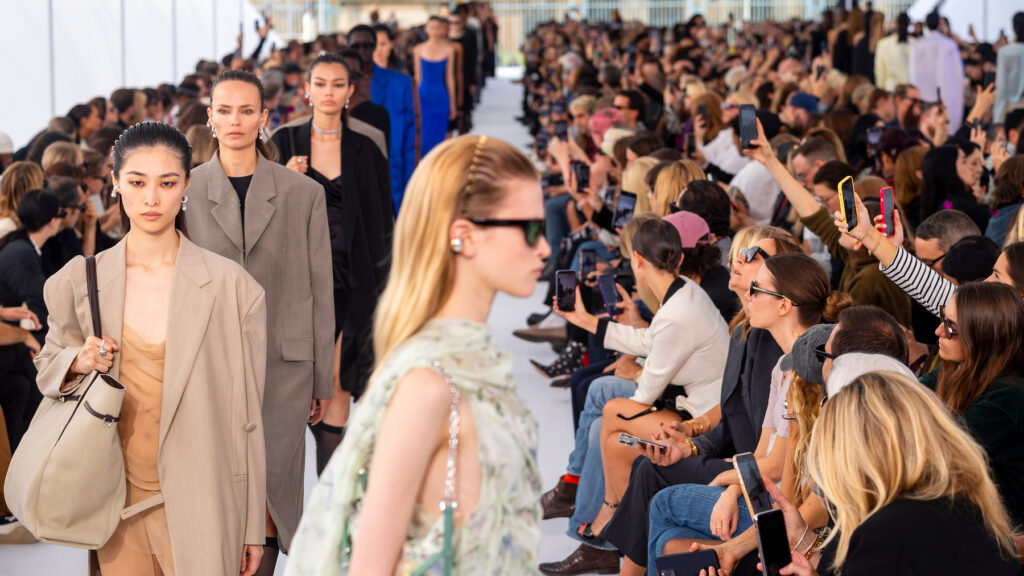
Technology has become an inseparable part of NYFW, transforming how audiences engage with fashion. Virtual reality (VR) runway shows allowed global viewers to experience collections in immersive 360-degree environments. Brands like Balenciaga and Tommy Hilfiger integrated augmented reality (AR) filters, enabling users to “try on” looks via their smartphones—a move that bridges the gap between physical and digital retail.
Artificial intelligence also played a starring role. Designers used AI algorithms to predict trends, optimize supply chains, and even co-create patterns. For example, IBM’s AI tool collaborated with a rising designer to generate a print inspired by New York’s skyline, which became a highlight of the week. Meanwhile, blockchain technology ensured transparency in sourcing, allowing consumers to trace a garment’s journey from farm to runway.
The metaverse further expanded NYFW’s reach. Digital fashion houses like The Fabricant presented NFT-based collections, catering to a growing audience of virtual consumers. These innovations aren’t gimmicks; they’re reshaping how fashion is created, consumed, and perceived in an increasingly digital world.
Emerging Designers to Watch
NYFW 2024 provided a platform for fresh voices, with emerging designers stealing the spotlight. Among them, Anifa Mvuemba of Hanifa captivated audiences with her bold use of color and innovative sizing techniques. Her “virtual fit” technology, which allows customers to see how garments drape on diverse body types, challenges industry norms around inclusivity.
Another standout was Peter Do, whose eponymous label redefined modern tailoring. Do’s fusion of sharp suiting with fluid, gender-neutral silhouettes earned praise for its versatility and craftsmanship. Similarly, Telfar Clemens continued to disrupt the status quo with his unisex “Shopping Bag” collection, emphasizing accessibility in luxury fashion.
The rise of these designers underscores a broader shift toward democratizing fashion. Social media has leveled the playing field, enabling independent labels to gain traction without hefty marketing budgets. Platforms like TikTok and Instagram Live turned runway moments into viral sensations, proving that talent—not just tradition—drives success today.
Cultural Influences and Global Inspirations
NYFW 2024 celebrated cultural diversity like never before. Designers drew inspiration from global traditions, resulting in collections that felt both personal and universal. Nigerian-born designer Adeam incorporated Ankara prints into sleek, contemporary designs, while Korean label Kusikohc blended hanbok-inspired silhouettes with streetwear edge.
The Latin American influence was also palpable. Colombian designer Johanna Ortiz showcased her signature ruffled dresses in vibrant tropical hues, while Mexico’ Carla Fernández highlighted indigenous weaving techniques. These cross-cultural exchanges reflect fashion’s power to foster connection in a fragmented world.
Moreover, the inclusion of models of all ages, sizes, and backgrounds reinforced NYFW’s commitment to representation. Iconic figures like Naomi Campbell shared the runway with non-binary activists and senior models, sending a clear message: beauty knows no boundaries.
Behind the Scenes: The Unsung Heroes
While designers and models bask in the spotlight, NYFW’s success hinges on countless behind-the-scenes contributors. Makeup artists like Pat McGrath and hairstylist Guido Palau worked tirelessly to create looks that complemented each collection’s vision. McGrath’s ethereal glow for Rodarte and Palau’s sculptural updos for Michael Kors were as integral to the shows as the garments themselves.
Stylists and set designers also played crucial roles. For Thom Browne’s aquatic-themed show, the runway was transformed into an underwater wonderland complete with coral reefs and floating models. Such meticulous attention to detail turns fashion shows into multisensory experiences, blurring the line between reality and fantasy.
Even logistics teams deserve applause. Coordinating hundreds of designers, models, and press in a single week is a Herculean task. This year’s seamless execution—despite last-minute weather disruptions—proves that NYFW remains a well-oiled machine.
FAQs: Your Questions About NYFW 2024 Answered
Q: When did New York Fashion Week 2024 take place?
A: The event ran from February 9th to February 16th, 2024, with shows held at iconic venues like Spring Studios and the American Stock Exchange Building.
Q: What were the standout trends this year?
A: Key trends included structured minimalism, maximalist embellishments, sustainable materials, and gender-neutral designs.
Q: How did sustainability influence NYFW 2024?
A: Designers prioritized eco-friendly fabrics, circular fashion initiatives, and carbon-neutral logistics to reduce the event’s environmental footprint.
Q: Were there any technological innovations?
A: Yes! VR runways, AI-assisted designs, and blockchain transparency tools were among the tech highlights.
Q: Can the public attend NYFW shows?
A: While most shows are industry-only, brands increasingly host public-facing events and live streams to engage broader audiences.
Q: What cultural themes stood out?
A: Collections celebrated global traditions, from African prints to Latin American craftsmanship, emphasizing inclusivity and cross-cultural dialogue.



